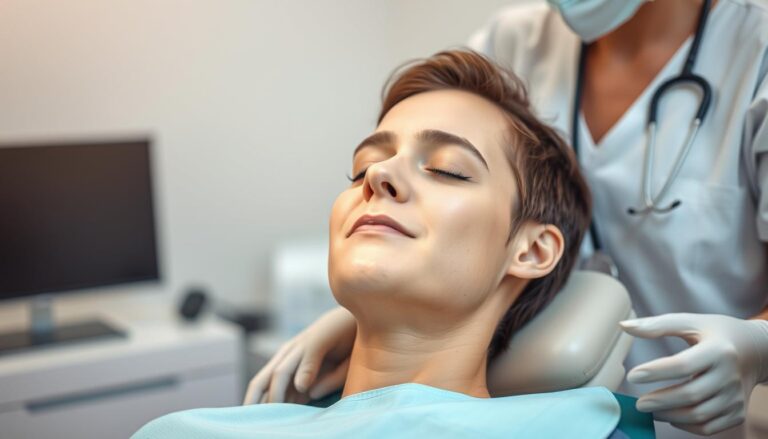How is Invisalign Different from Traditional Braces?
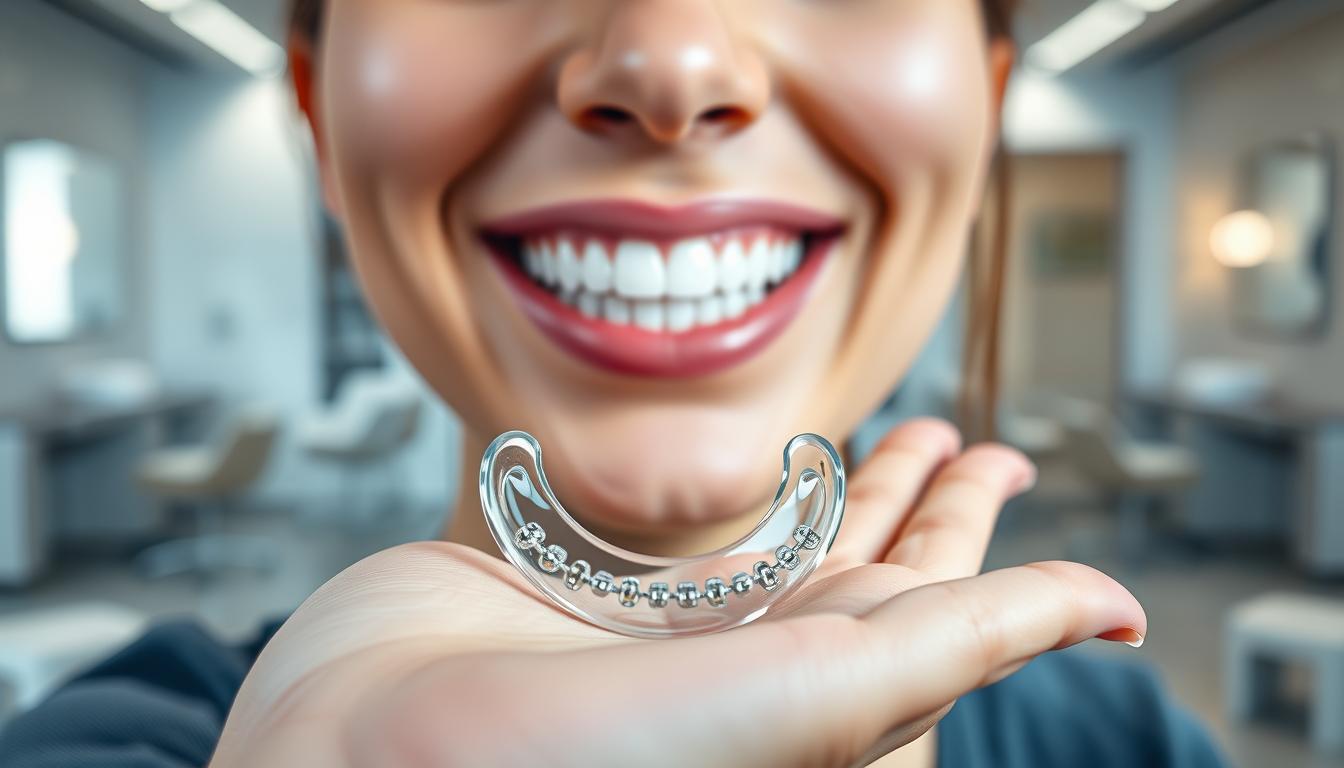
Did you know that around four million Americans get orthodontic care at any time? This shows the high demand for solutions that improve dental alignment and promote oral health.
Traditional braces use metal brackets and archwires. Invisalign, on the other hand, relies on clear, removable trays. Both methods move teeth into ideal positions. Yet, each offers a unique experience. Many patients wonder, “How is Invisalign different from traditional braces?” because comfort, materials, and treatment steps are key.
Key Takeaways
- Treatment options vary based on patient preferences.
- Metal braces remain fixed, while Invisalign aligners are removable.
- Monthly adjustments are standard for braces; aligners change on a set schedule.
- Materials differ: steel components vs. near-invisible plastic trays.
- Both methods focus on creating straighter teeth and healthier smiles.
Overview of Orthodontic Treatments
Orthodontic care helps align teeth and improves oral health. Many people choose between Invisalign and traditional braces for crooked or crowded teeth. Both methods use precise techniques to move teeth into better positions.
What Are Traditional Braces?
Traditional braces have small brackets on each tooth and wires connecting them. Some options include ceramic or lingual braces. These styles apply constant pressure to adjust spacing and fix bite issues over time. At the end of treatment, professionals remove the brackets.
What Is Invisalign?
Invisalign uses clear aligners made from 3D scans. These aligners are removable and gently move teeth into place. Wearing them consistently makes treatment comfortable and keeps your smile discreet.
Benefits of Orthodontic Treatment
- Reduced risk of uneven tooth wear
- Improved jaw function and bite stability
- Boosted confidence through a balanced smile
Aesthetic Considerations
Many people look for orthodontic solutions that match their style. They want treatments that are both effective and look good. Invisalign benefits are often a big factor in their choice.
Visibility of Traditional Braces
Metal braces are hard to miss in daily life. Clear or lingual braces are less noticeable but still strong. Some prefer these options to hide the braces.
Aesthetic Appeal of Invisalign
Invisalign aligners are almost invisible. They fit well with natural teeth. This makes them perfect for those who don’t want to draw attention. Invisalign benefits include being barely noticeable, boosting confidence at work.
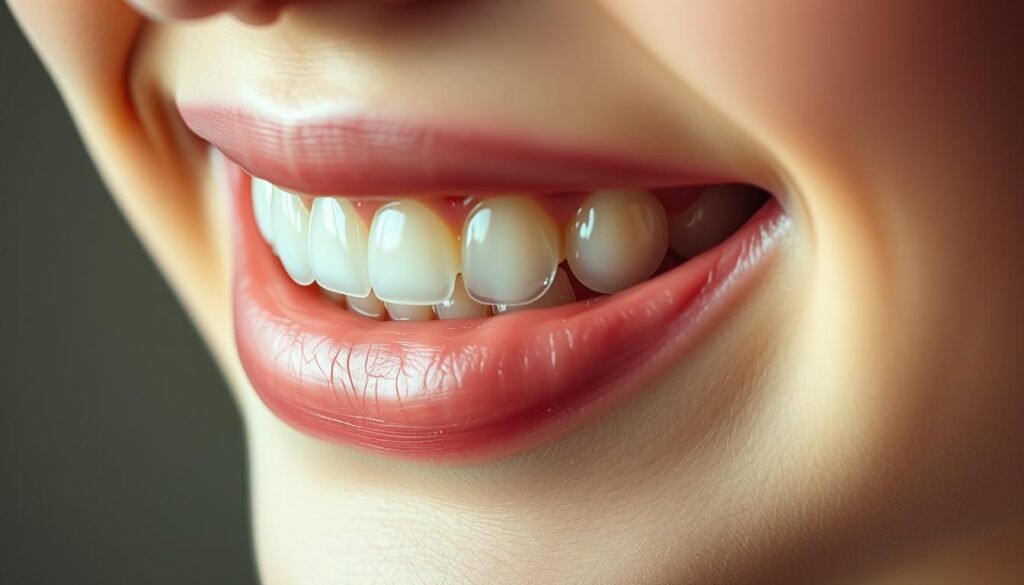
Age Appropriateness for Each Option
Teens often care a lot about how they look during treatment. Adults might want something discreet for work. The choice between braces and aligners depends on personal taste and goals.
| Feature | Key Information |
|---|---|
| Traditional Braces | Visible hardware, yet ceramic and lingual versions reduce glare |
| Invisalign | Clear aligners that offer subtle, nearly invisible correction |
Comfort and Patient Experience
When choosing between Clear aligners and metal braces, comfort is a big concern. Everyone’s mouth is different, but making sure orthodontic care is gentle is key. This means looking for options that are smooth, cause little irritation, and make you feel less anxious.
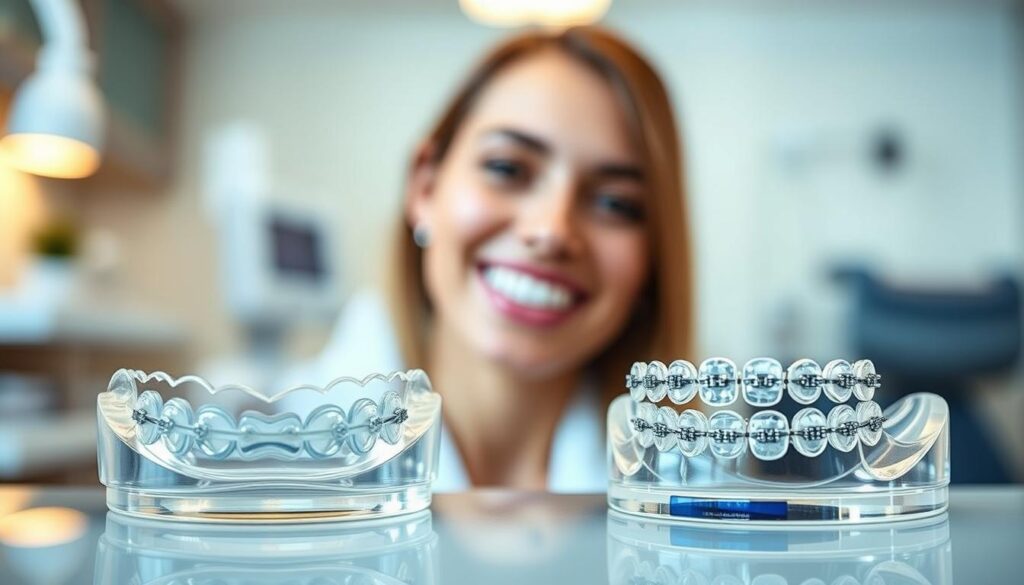
Comfort Level of Braces
Traditional metal braces need wire adjustments to move teeth. Some people feel pressure after each adjustment. The metal parts can also rub against soft mouth tissues, leading to soreness. To help, some use special wax or mouth rinses.
Invisalign Comfort Features
Invisalign trays are made to fit closely over your teeth. They have a smooth surface to reduce soreness near the gums. Switching to a new aligner might cause some mild pressure, but most find it less uncomfortable than metal braces.
“Daily reports from several orthodontic offices highlight the value of reduced mouth soreness using advanced aligner technology.”
Adjustments and Discomfort
Any change in your teeth can cause temporary pain. Most people get used to it within a couple of days after each adjustment. With careful planning and regular check-ups, both Clear aligners and metal braces can lead to a beautiful smile.
Treatment Process
Every orthodontic journey has a plan to move teeth into better positions. People often think about how long it takes, how easy it is to fit into their daily life, and what the results will be. Invisalign advantages are often appealing because they seem to fit better into daily routines.
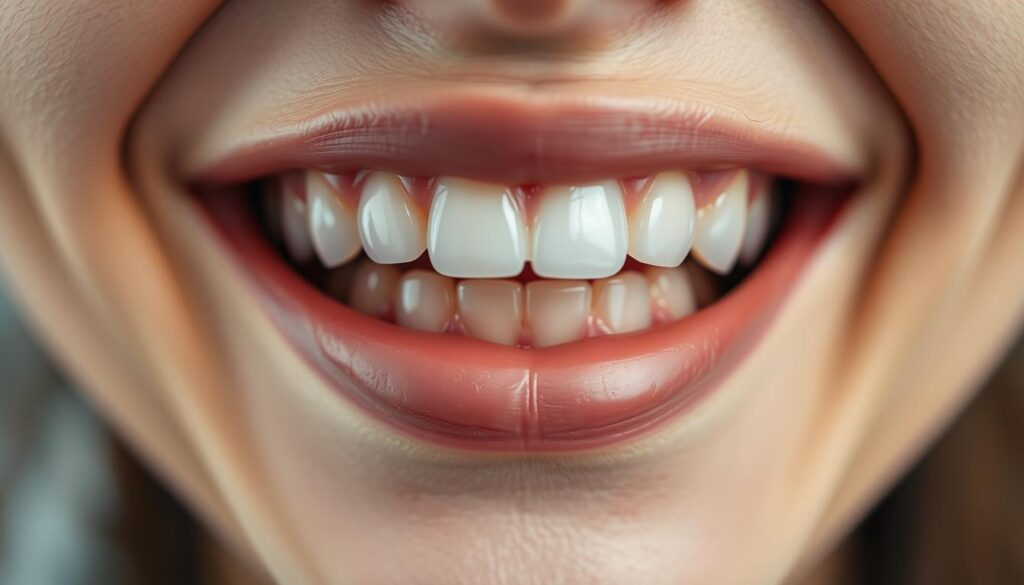
Timeline Comparison
Braces work all the time, with adjustments to keep teeth moving. Aligners need to be changed every few weeks. This makes them similar for simpler cases.
Required Office Visits
Braces need more visits to tighten and check progress. Clear aligners, on the other hand, give you more trays at once. This means fewer visits, which is a big plus for busy people.
Monitoring Progress
Every visit checks how teeth are moving and if changes are needed. Working together, patients and orthodontists catch any problems early. Both methods need regular check-ups to keep things on track.
| Aspect | Key Details |
|---|---|
| Frequency of Changes | Braces: Adjust wires at each visit. Aligners: Switch trays on a set schedule. |
| Appointment Spacing | Braces: Routine tightening sessions. Aligners: Periodic progress checkups. |
Material and Design Differences
Today, orthodontic treatments focus on materials that are comfortable and effective. Dentists and patients look for technology and design that lead to good results.
Components of Traditional Braces
Braces have brackets, wires, and elastic bands. These parts work together to move teeth into place. Metal is common, but ceramic brackets offer a less visible option.
- Some braces now appear nearly transparent
- Traditional braces correct jaw positions and unwanted tooth overlaps
- Continuous modifications help teeth progress toward the target alignment
To learn more about braces evolution, check out this overview.
Invisalign Material Technology
Invisalign uses special thermoplastics made from 3D imaging. Each set moves teeth a little at a time, without metal wires. This design is flexible and guides teeth well over time.
Customization Options
Patients can ask for custom features like color-matched connectors. These match tooth colors, making treatments more comfortable and stylish.
Oral Hygiene and Maintenance
Keeping your mouth clean is crucial for lasting results. Plaque and food trapped between teeth can weaken them. A strict cleaning routine is essential for your health.
Sticking to a consistent care plan makes a big difference. It ensures long-term success and comfort.
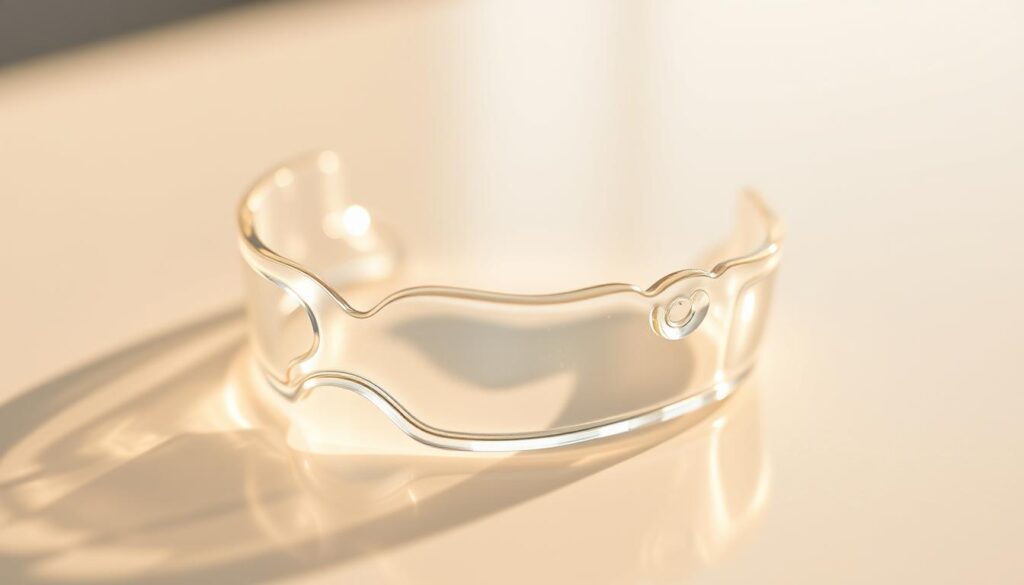
Cleaning Traditional Braces
Braces have brackets and wires where food can get stuck. People use small brushes and floss threaders to clean them. Brushing gently helps avoid damaging the wires and keeps gums healthy.
- Brush after each meal to reduce plaque
- Use specialized floss for tight spaces
- Check for leftover food in difficult spots
Maintaining Invisalign Cleanliness
Invisalign aligners can be taken out, making it easier to brush and floss. Rinsing and storing them in a clean case stops bad smells. Mild soap or special solutions clean them, keeping your breath fresh.
Impact on Dental Health
Good care reduces the risk of gum disease and cavities. Regular dentist visits check your progress and encourage good habits. This care leads to a bright smile, whether you have braces or Invisalign.
Dietary Restrictions
Choosing orthodontic methods means making specific food choices. The type of hardware affects meal planning and eating habits. Let’s explore what makes each option unique.
Foods to Avoid with Braces
Metal brackets and wires can be risky with hard, sticky, or chewy foods. Biting into these can dislodge brackets, lengthening treatment. Gum and caramel can stick to wires, needing more orthodontist visits. Common mistakes include:
- Crunchy snacks like popcorn kernels
- Sticky candy that adheres to wires
- Chewy bagels or dense breads
Dietary Flexibility with Invisalign
Aligners can be taken out for meals, offering more food choices. There’s less risk of broken parts. It’s important to brush before putting aligners back to protect teeth.
Impact on Lifestyle Choices
Food preferences can affect treatment satisfaction. Those who like tough or chewy foods might prefer clear aligners. How often you snack and your oral care routine can also influence results.
| Type of Food | Braces Recommendation | Invisalign Recommendation |
|---|---|---|
| Sticky Candy | Avoid | Remove Aligners, Then Eat |
| Hard Nuts | Moderation with Caution | Remove Aligners, Then Eat |
| Corn on the Cob | Cut into Smaller Pieces | Remove Aligners, Then Eat |
Cost Comparisons
Many patients are curious about the price difference between fixed brackets and clear aligners. Studies show that location, materials, and how complex the tooth movement is affect the cost. Families look at these factors to choose the best option for them.
Average Cost of Traditional Braces
Metal brackets usually have a standard price. Ceramic or lingual options might cost more because they require special materials. The number of visits for adjustments also adds to the total cost, based on how long the treatment lasts and how many visits are needed.
Cost of Invisalign Treatment
The price for Invisalign technology can be similar to traditional braces. But, if more aligners are needed or if extra work is required, the cost can go up. Providers consider each patient’s needs, like custom trays and replacement aligners, when giving estimates.
Insurance Coverage for Each Option
Many insurance plans cover both options. It’s important to check with your insurance to see what’s covered. Some dentists offer payment plans or discounts to help with costs. Some people start with aligners and then switch to traditional braces.
Things that affect the cost include:
- Where you live and who provides the treatment
- How complex the alignment needs are
- The type of materials used
| Treatment Type | Approximate Cost | Insurance Coverage |
|---|---|---|
| Traditional Braces | $3,000 – $7,000 | Often covers partial costs |
| Invisalign | $3,000 – $8,000 | Frequently provides similar benefits |
Effectiveness and Alignment Goals
Both orthodontic systems use force to move teeth into the right spots. People want their teeth to work better and look good. Invisalign uses removable aligners, while braces have fixed brackets and wires.
Treatment Outcomes with Braces
Braces apply strong pressure to fix teeth over time. They can fix rotations, gaps, and crowding. Experts often see great results with braces and regular visits.
Effectiveness of Invisalign
Invisalign uses custom trays to move teeth step by step. It works well when used as directed. This method is known for being discreet and comfortable.
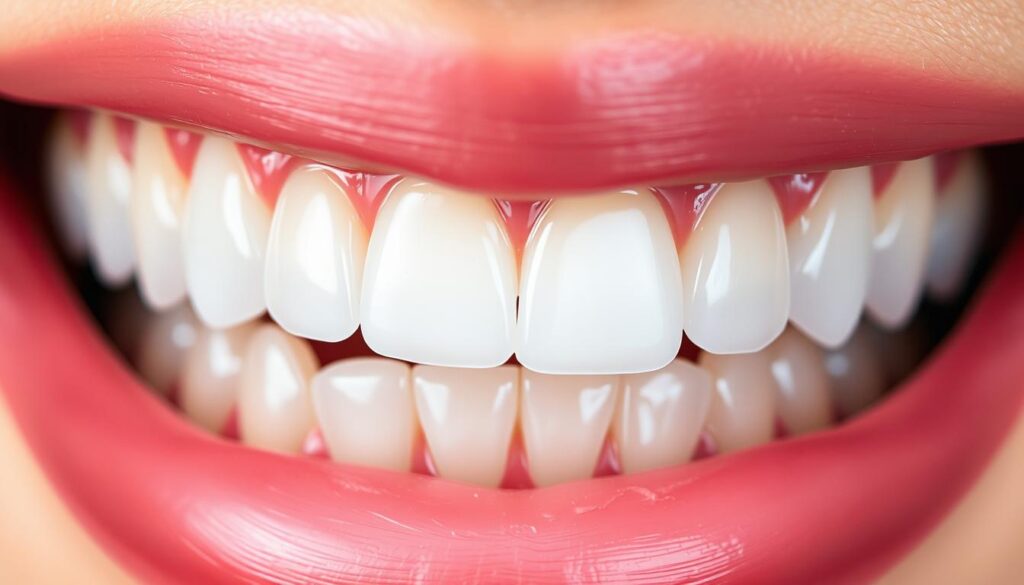
Complexity of Cases Addressed
Braces might be better for complex cases like jaw issues or severe crowding. For unusual skeletal problems, some prefer Invisalign for spacing issues. Decisions depend on:
- How bad the alignment is
- The person’s age and how well they follow instructions
- Any skeletal challenges
Treatment Length Expectations
How long orthodontic treatment takes depends on several things. These include how complex the case is, how well the patient follows instructions, and how much the patient grows. Issues like crowding, spacing, and skeletal problems can affect the time needed for each step. A personalized plan is created to meet each patient’s unique needs.
Average Duration for Braces
Braces usually take between 18 and 24 months. For simpler cases, treatment might be shorter. But for more complex issues like tooth rotations or jaw problems, it can take longer. Regular visits to the orthodontist are key to tracking progress and making sure everything is moving along as it should.
Projected Timeframe for Invisalign
Invisalign can be as fast or even faster than braces for some people. Mild to moderate cases often take 12 to 18 months. However, not wearing the aligners as directed can slow down the process. Keeping up with appointments and following instructions closely is crucial for achieving the best results.
Factors Affecting Duration
Age is a factor because younger patients tend to adjust better to changes. Jaw development, genetics, and gum health also play a part. Following the orthodontist’s advice carefully is essential for a smooth and quick treatment.

| Treatment Option | Usual Duration | Key Influencer |
|---|---|---|
| Braces | 18–24 months | Severity of misalignment |
| Invisalign | 12–18 months | Consistent aligner wear |
Age Considerations
Age affects how orthodontic devices work with our bones and gums. Kids tend to adjust faster, while adults might prefer something less noticeable. This means each age group can find a treatment that fits their needs and goals.
Best Age for Braces
Braces work best for kids and teens when their teeth and jaw are still growing. Starting early can fix problems before they get worse. Experts say to check orthodontic options around age seven to nine for the best results.
Suitable Age for Invisalign
Teens and adults like Invisalign because it’s almost invisible. Being able to take out the trays for meals is a big plus. But, it’s important to wear them every day to get the best results.
Adult Options for Treatment
Adults looking for a discreet fix might choose Invisalign. But, if you need more movement, braces could be the better choice. Both options can lead to stable teeth if you follow up with your orthodontist.
Lifestyle Impact
Choosing the right orthodontic option means considering your lifestyle. Think about your schedule, travel, and social events. Do you need protection during sports, or is it better to remove them easily?
Sports and Braces
Athletes with braces often use an Under Armour mouthguard. It protects their brackets and prevents damage. It’s important to be careful during drills to avoid loose wires.
Staying consistent with dental care helps keep treatment on track.
Wearing Invisalign during Activities
It’s best to remove Invisalign trays before intense workouts. They can stay in for lighter activities. Always store them safely to avoid losing them at the gym.
Daily Life Adjustments
People with metal braces might choose their meals more carefully. Invisalign users have more freedom to eat what they want. But, they must wear them consistently to avoid extending treatment.
| Activity | Braces Tips | Invisalign Tips |
|---|---|---|
| High-Impact Sports | Use mouthguard during contact | Remove trays to avoid damage |
| Social Gatherings | Plan meals around hardware | Take aligners out for short intervals |
Follow-Up and Retainers
Keeping teeth straight after treatment is key. It’s all about sticking to a routine. This routine helps teeth and gums stay stable. Regular check-ups boost confidence and catch any issues early.
Retainers After Braces
Braces can change teeth a lot, but they can still move. A custom retainer keeps teeth in place. Orthodontists often suggest wearing it all day at first, then just at night.
Retainers After Invisalign
Invisalign often ends with a special retainer. It helps teeth settle into their new spot. Some people use their last aligner as a retainer, but usually, a new one is needed.
Importance of Retainers for Both
Teeth and gums need time to adjust after treatment. Not wearing retainers can cause teeth to move back. Regular visits help keep teeth straight for good.
| Type | Recommended Wear | Key Benefit |
|---|---|---|
| Wired Retainer | Full-time, then nightly | Maintains precise alignment |
| Clear Retainer | Nightly after initial phase | Supports tooth stabilization |
Patient Satisfaction and Feedback
Patient happiness is key to orthodontic success. People who finish braces or Invisalign talk about comfort and results. They also share how a new smile boosts their confidence.
Success Stories with Braces
Braces from brands like 3M lead to big changes. Patients overcome alignment problems and feel more confident. Regular visits and progress make them happy.
Invisalign Patient Experiences
Invisalign gets praise for being almost invisible. People like how easy it is to wear. It fits into daily life without hassle, making it popular.
Surveys and Satisfaction Rates
Studies show how goals shape opinions on treatment. Those needing big changes often prefer braces. But, aligners are popular for their clear look. People value ease and style in their choices.
Conclusion
Choosing between braces and clear trays depends on many things. Each option has its own benefits, like the stability of wires or the subtlety of trays. Comfort, looks, and how to care for them also play a big role.
Which Option Is Right for You?
For those who want something almost invisible, Invisalign might be the best choice. Others might prefer the traditional look of braces. The key is how well you stick to daily routines, especially with removable options.
Consulting an Orthodontist
An orthodontist can look at your teeth and talk about your lifestyle. They can also guess how long each treatment will take. This advice helps you choose what’s best for you, making sure you’re happy with your choice.
Final Thoughts on Braces vs. Invisalign
Knowing what you’re getting into is important. Understanding the time, cost, and effort needed is key. Making an informed choice leads to better experiences and results that last.

